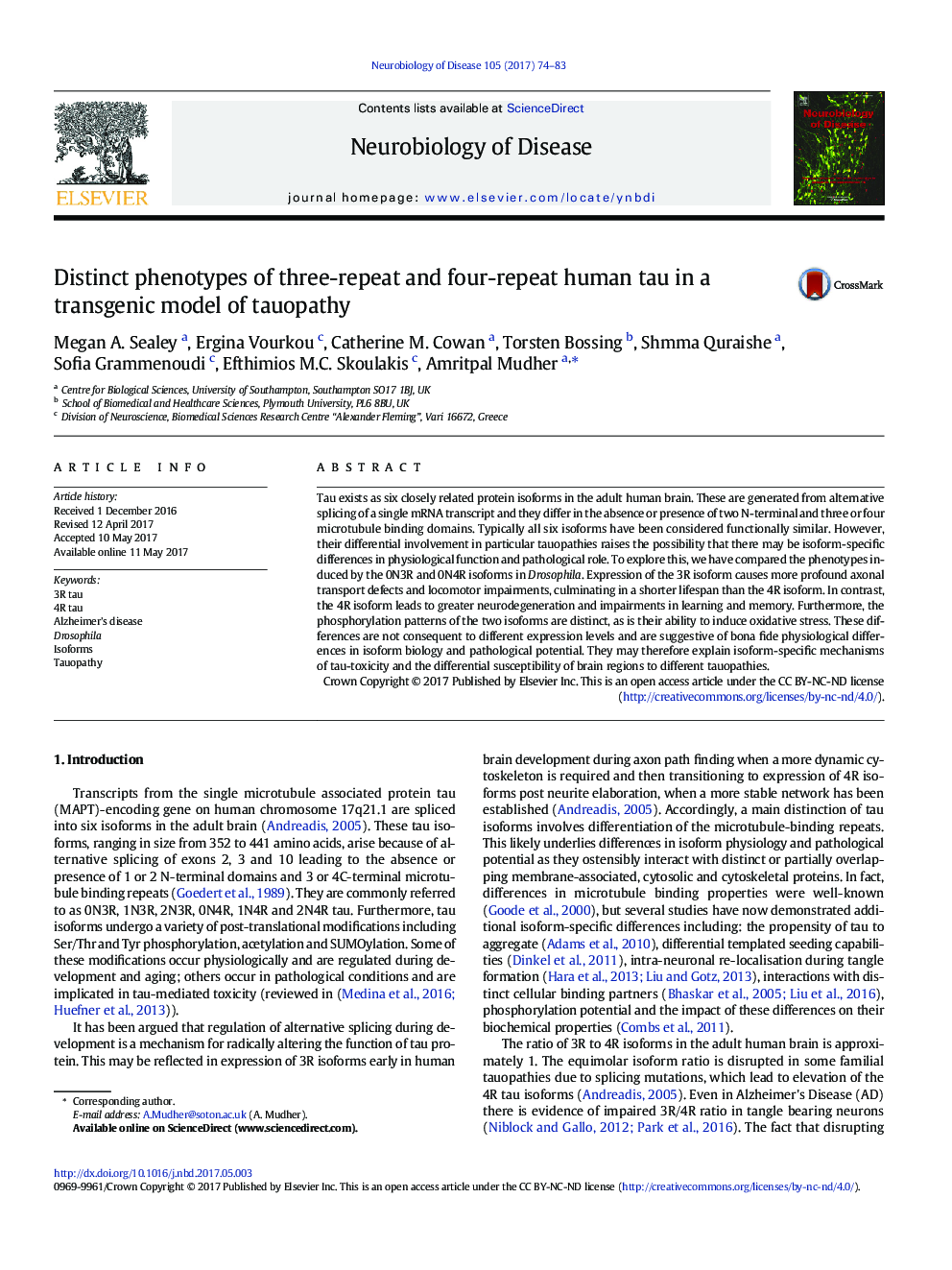| کد مقاله | کد نشریه | سال انتشار | مقاله انگلیسی | نسخه تمام متن |
|---|---|---|---|---|
| 5630636 | 1580616 | 2017 | 10 صفحه PDF | دانلود رایگان |
- All six isoforms of human tau have traditionally been considered to be functionally similar.
- We show here that there are isoform specific differences in the phenotypes induced by 0N3R and 0N4R tau, which could be related to their differential phosphorylation and oxidative stress potential.
- Expression of the 3R isoform causes more profound axonal transport defects and locomotor impairments, culminating in a shorter lifespan than the 4R isoform.
- In contrast, the 4R isoform leads to greater neurodegeneration and impairments in learning and memory.
- They may therefore explain isoform-specific mechanisms of tau-toxicity and the differential susceptibility of brain regions to different tauopathies.
Tau exists as six closely related protein isoforms in the adult human brain. These are generated from alternative splicing of a single mRNA transcript and they differ in the absence or presence of two N-terminal and three or four microtubule binding domains. Typically all six isoforms have been considered functionally similar. However, their differential involvement in particular tauopathies raises the possibility that there may be isoform-specific differences in physiological function and pathological role. To explore this, we have compared the phenotypes induced by the 0N3R and 0N4R isoforms in Drosophila. Expression of the 3R isoform causes more profound axonal transport defects and locomotor impairments, culminating in a shorter lifespan than the 4R isoform. In contrast, the 4R isoform leads to greater neurodegeneration and impairments in learning and memory. Furthermore, the phosphorylation patterns of the two isoforms are distinct, as is their ability to induce oxidative stress. These differences are not consequent to different expression levels and are suggestive of bona fide physiological differences in isoform biology and pathological potential. They may therefore explain isoform-specific mechanisms of tau-toxicity and the differential susceptibility of brain regions to different tauopathies.
Journal: Neurobiology of Disease - Volume 105, September 2017, Pages 74-83
